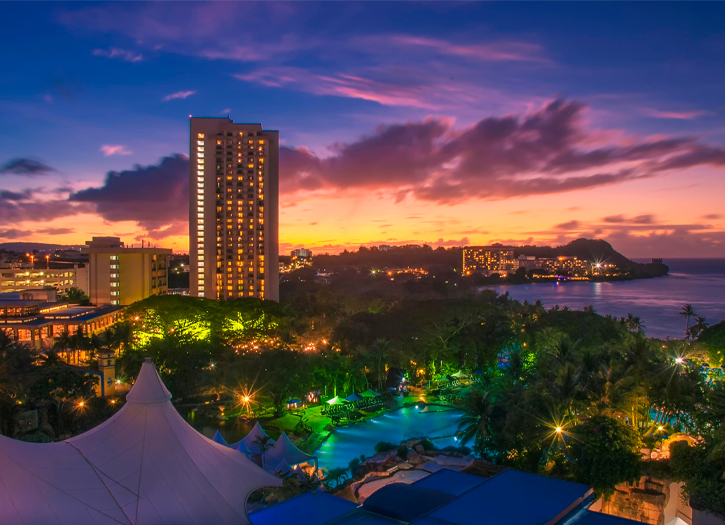Guam confirmed its first case of the COVID-19 pandemic on March 15, 2020, and the first death on March 22. The Government of Guam ordered the general lockdown of the island in mid-March. Governor Lou Leon Guerrero announced the implementation of a four-step “Pandemic Condition of Readiness” (PCOR) on April 30, 2020.
A spike in cases in mid-August resulted in the rolling positivity rate for tests to go above 2%, as well as infections for both the Governor and Lieutenant Governor. Guam announced a return to the lockdown conditions of PCOR 1 on August 14 for at least two weeks to control the outbreak. As of September 2, 2020, there have been 1,494 confirmed cases, 653 recoveries, and thirteen deaths. The Guam Department of Public Health and Social Services received its first COVID-19 test kits from the U.S. Centers for Disease Control and Prevention.United States President Donald Trump approved a disaster declaration for Guam that orders Federal assistance to supplement territory and local coronavirus recovery efforts. The President also signed the national $2 trillion COVID-19 relief bill with approximately $111 million allocated to Guam.
Guam Regional Medical City, which was designated for non-COVID-19 care on the island, reported that it was being overwhelmed with serious cases, partially because many patients had delayed preventative care and early treatment during the pandemic. Nurses reported a 300% increase in rapid response calls and the corresponding increase in the number of deaths. In response to GovGuam claims that the epidemiological curve had been flattened, a Guam Daily Post editorial noted that recent COVID-19 testing had been a third of that conducted earlier in the pandemic.
Leon Guerrero announced that Guam would move to PCOR 2 on Sunday, May 10, allowing malls, salons, shopping centers and flower shops to open at 50% capacity. People in public would continue to be required to wear masks.The Agana Shopping Center and Micronesia Mall, two of the largest malls in the territory, stated that they would limit the number of open entrances and total number of occupants, and screen all entering customers for fever with thermometers.
Lou Leon Guerrero indicated that the government is looking to reopen more business types and increase the limit on social gatherings to 50, from 25, on July 1. She stated “our infection rate, even with the increase through the military, still remains below 1%.
GovGuam added additional U.S. states and countries as “high risk areas” requiring quarantine for incoming travelers. Gov. Leon Guerrero stated that they were averaging 200 tests per day, with more than 16,300 tests total since the pandemic began, or about 9.2% of the population Felix Cabrera, head of the governor’s medical advisory group, said that there are five new cases daily on average, at a 1.59% positive rate; five is the absolute “threshold for concern”, but 3% is the percentage threshold of concern. Japan Airlines extended its flight suspension for Guam to September 30. DPHSS closed six businesses primarily for lack of management certification.
Stores on Guam experienced a rush of shopping after the announcement of a two-week PCOR 1 lockdown. One store estimated a 30% increase. Lou Leon Guerrero announced that Guam had 105 new COVID-19 cases and that she was implementing a one week escalation of restrictions from the previously announced PCOR 1: “all businesses will be closed with the exception of grocery stores, healthcare operations, including pharmacies, gas stations, convenience stores, hardware stores, and those operations critical to health, shelter, and the preservation of life.
The Guam Election Commission recommended canceling or postponing the primary election scheduled for August 29. Several precinct officials have dropped out because of COVID-19 concerns and some vendors supporting the election have not been able to work because of the ban on non-essential business. Use of untrained backup precinct workers may violate the governor’s orders restricting government operations during the lockdown. Effective August 23 through August 28, all incoming travelers were required to quarantine at a government facility for two weeks. The only exceptions are pre-approved essential health care or critical service workers who present a valid negative COVID-19 test from within five days of arrival.







Add Comment